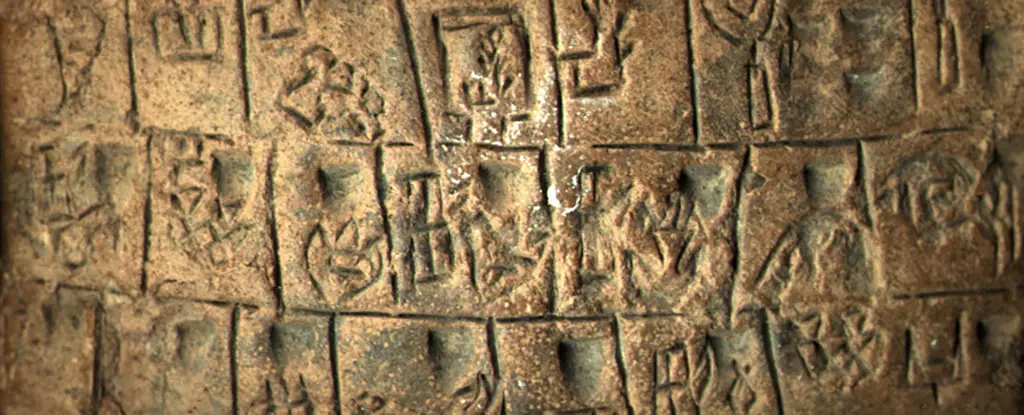The story of writing unfolds as one of humanity’s greatest cultural strides. Tracing its roots over tens of thousands of years, it exemplifies our innate desire to communicate and document experiences. The precise moment when primitive engravings evolved into structured writing remains uncertain, though significant advancements have emerged from recent archaeological studies. Researchers at the University of Bologna have brought forth intriguing connections between ancient Mesopotamian seals and an early form of visual communication known as proto-cuneiform, a precursor to the written language that would shape civilizations.
Led by philologist Silvia Ferrara, the research team aimed to delve deeper into the link between ancient seal imagery and the emerging system of writing in Southwest Asia. Ferrara emphasized that while the connection between sealing practices and the birth of writing is acknowledged, the intricate bonds between distinct seal images and the signs of proto-cuneiform have previously evaded thorough investigation. The crux of the research rested upon a pivotal question: Did the imagery depicted on seals play an instrumental role in the development of early writing symbols in the region?
Through meticulous analysis, the researchers juxtaposed the designs found on cylinder seals against established proto-cuneiform signs. Their examination encompassed a timeline stretching from the period before Mesopotamian writing was fully realized, spanning into the proto-literate phase. This comprehensive investigation revealed a striking resemblance in how artifacts were illustrated on the seals and the corresponding proto-cuneiform characters. These discoveries highlight the imagery’s potential significance in shaping the early forms of written communication.
Symbols: The Foundations of Communication
At its core, writing serves as a complex system of encoded language that enables individuals to share thoughts, ideas, and information across vast temporal and spatial divides. Long before systematic writing took shape, however, people explored simple symbols to convey fundamental concepts. These symbols, which represented ideas and transactions, laid the groundwork for what could be viewed as a rudimentary form of communication or ‘proto-writing.’
The team found that the proto-cuneiform signs related to woven fabrics exhibited distinct triangular structures, often accompanied by vertical lines that insinuated material draping. Similarly, cylinder seals depicting figures engaged in weaving exhibited strikingly analogous patterns. Such connections suggest that visuals kept on these seals may have acted as a blueprint for the signs that emerged in early writing forms.
The cognitive transition from basic symbolic representations to fully realized writing systems reflects a pivotal moment in human history. As Ferrara notes, the invention of writing signifies the boundary between prehistory and recorded history, highlighting a remarkable leap in human cognitive capabilities. The research illuminates how late prehistoric images on cylinder seals were essential to the genesis of one of the world’s earliest writing systems, proto-cuneiform.
Initially, proto-cuneiform emerged significantly as a tool for tracking agricultural production and trade. It simplified record-keeping of commodities, aiding societal organization and commerce. Before the advent of true literacy in Mesopotamia, cylinder seals functioned as practical instruments for documenting transactions. They allowed the “printing” of records onto clay tablets, thereby enabling people to bridge communication gaps in trade and exchange.
The implications of this research resonate far beyond mere historical curiosity. By establishing a clear connection between the designs inscribed on cylinder seals and the development of writing, Ferrara and her colleagues reinforce our understanding of how early humans navigated the intricacies of communication. Reflecting on this significant evolution, we gain a profound appreciation for the transformative power of writing—a cultural innovation that has shaped societies, governance, and personal relationships throughout millennia. As we explore these ancient beginnings, we are reminded of the enduring human quest to record our stories, thoughts, and identities through the written word.


Leave a Reply